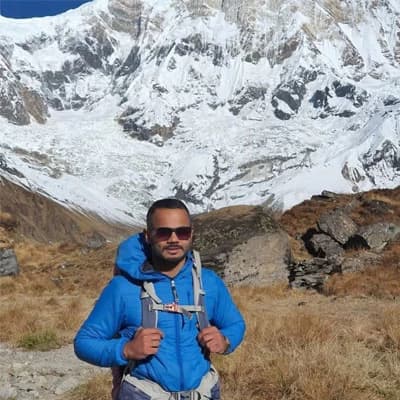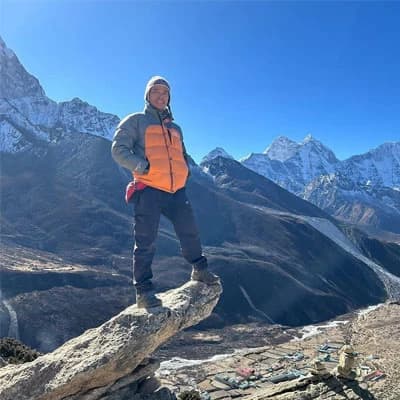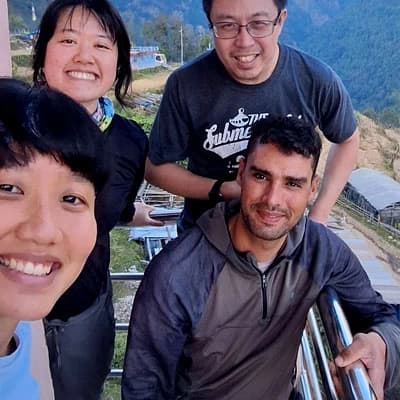Best Time to Trek to the Annapurna Circuit in Nepal
Choosing the right time to trek on the Annapurna Circuit is crucial for an enjoyable experience. Two major seasons offer the most favorable conditions: Spring (March-May) and Autumn (September-November).
Spring (March-May)
Spring is a popular choice for trekking. The weather is generally mild with clear skies, offering stunning views of the Himalayas.
Temperatures range from 10°C to 20°C during the day and can drop below 0°C at night in higher altitudes. The landscape comes alive with vibrant colors as rhododendrons bloom along the trail, creating an impressive scenery.
Autumn (September-November)
Autumn is another excellent time to trek the Annapurna Circuit. The weather remains pleasant with clear skies and moderate temperatures.
While the trails might be busier during this peak season, the stunning autumn vegetation and the festive atmosphere in Nepal add to the overall experience.
Other Seasons
Summer (June-August): Trekking in the Annapurna region during summer is possible but not ideal due to monsoon rains. It’s best suited for experienced trekkers who are prepared for slippery trails and unpredictable weather. If you decide to trek in summer, make sure to bring waterproof gear and sturdy shoes, and be prepared for potential delays.
Winter (December-February): Winter trekking can be challenging due to extremely cold temperatures, snow, and slippery trails. However, it can be ideal for experienced trekkers seeking a more adventurous experience and fewer crowds.
Key Considerations
Book in advance: If you plan to trek during peak seasons (Spring and Autumn), book your accommodation and trekking packages well in advance, especially if traveling during major festivals.
Be prepared for unpredictable weather: Even during the best seasons, unpredictable weather conditions can occur. Pack accordingly and be prepared for potential changes in your itinerary.
Preparing for the Annapurna Circuit Trek: Essential Tips
Before embarking on the Annapurna Circuit Trek, it is crucial to understand its difficulty, fitness needs, and whether it’s suitable for beginners. This is because the trek involves long days of walking on varied terrain, with steep climbs and high-altitude challenges.
While the trek is not technically difficult, its length and altitude demand preparation. The highest point, Thorong La Pass, sits at 5,416 meters (17,769 feet), so acclimatization is essential to avoid altitude sickness.
Is it for Beginners?
The Annapurna Circuit is not considered a typical beginner trek due to its high altitude and physical demands. However, with proper preparation and a cautious approach, even those with limited hiking experience can successfully complete the circuit.
Fitness Preparation
To prepare for the trek, focus on improving your cardiovascular fitness through activities like hiking, running, cycling, and swimming. Strengthen your legs with exercises like squats and lunges. Practice hiking with a backpack to build endurance and simulate trekking conditions.
Important Considerations
Acclimatization: Allow plenty of time for your body to adjust to the altitude.
Pacing: Pace yourself during the trek and rest when needed.
Listen to your body: Pay attention to any signs of altitude sickness and consult with a guide if needed.
By following these tips and approaching the trek with a well-prepared mindset, you can increase your chances of a successful and enjoyable Annapurna Circuit adventure.
Accommodations, Food, and Drinks on the Annapurna Circuit
One of the rewarding experiences of trekking in the Annapurna region is excellent food and a range of comfortable places to stay. Teahouses along the trail provide cozy retreats where you can enjoy a warm meal and share stories with fellow hikers.
These guesthouses serve a variety of meals, from local Nepalese dishes to international options, including plenty of vegetarian choices. Conveniently located about a day's walk apart, teahouses offer a welcoming atmosphere that enhances your trekking journey.
Now, let's explore the different types of accommodations you'll find during your Annapurna Circuit Trek.
Accommodations
During your trek, you can choose from a variety of accommodations, each providing a unique experience:
Teahouses
Teahouses, often run by local families, offer simple, cozy rooms with 2-3 beds. Some feature attached bathrooms, while others may have shared facilities. Ranging from budget-friendly to more comfortable options, many teahouses provide amenities like hot showers and Wi-Fi. Staying at a teahouse offers a chance to experience authentic Nepalese hospitality.
Guesthouses and lodges
For a more luxurious experience, guesthouses and lodges provide private rooms, hot showers, Wi-Fi, and charging stations. These accommodations are often located at scenic viewpoints, offering amazing views and attentive service.
Homestays
Homestays let you immerse yourself in local life by staying with a host family. You’ll gain insights into their traditions while enjoying warm hospitality. While amenities vary, homestays offer a cost-effective way to explore the region and create a memorable cultural experience. They are less common at higher altitudes.
Camping
If you prefer to enjoy nature in its purest form, camping is an ideal option. The Himalayan Massif Trek will provide the necessary equipment and set up campsites in safe locations. Camping allows you to explore quieter trails and appreciate the serene beauty of the Annapurna region, making it perfect for those seeking solitude and a deeper connection with nature.
Food Options on Your Annapurna Circuit Trail
Nourishing yourself is key to a successful trek. While the selection might be simpler than in large cities, you'll still find delicious, nutritious, and hygienic food along the way. Here are some must-try dishes during your Annapurna Circuit Trek:
Dal Bhat Tarkari – The Main Dish
Rice, or Bhat, is a main dish in Nepal. Typically, it's served with Dal (lentil soup) and Tarkari (vegetable curry), often accompanied by pickles. The curry can sometimes include meat. Dal Bhat is rich in carbohydrates, making it an ideal choice to keep you energized during the trek.
Momos (Delicious Dumplings), Noodles, and Pasta
Momos are one of Nepal's most beloved foods. These dumplings, filled with vegetables or meat like chicken or buffalo, are served with a tangy dipping sauce. At the same time, you’ll also find a variety of noodle dishes and pasta along the trail, offering a welcome alternative to rice-based meals.
International Cuisine
Larger settlements along the trek offer international cuisine options, such as pizza, burgers, pancakes, and different types of bread (including chapati and Tibetan bread). These will give you a taste of home while trekking in the Himalayas.
Local Specialties
In addition to the main dishes, try regional specialties like yak meat burgers, buckwheat-based dishes, and Gundruk (fermented leafy vegetables). These dishes offer a unique glimpse into the local flavors of the Annapurna region.
Snacks and Energy Boosters
Stay fueled with energy bars, chocolate, nuts, and dried fruits. However, if you're on a budget, consider purchasing these snacks in Kathmandu before starting your trek.
Dietary Considerations
Most teahouses offer vegetarian and vegan options. Thus, if you have dietary restrictions, let them know in advance, but keep in mind that food options may become more limited and expensive at higher altitudes.
Drinks
As you trek at high altitudes, you will be breathing more and losing more water so staying hydrated is crucial. Here are the best ways to stay hydrated on the Annapurna Circuit:
Water
Water is essential for hydration and preventing altitude sickness. While you can buy bottled water along the route, it’s better to use a reusable water bottle for the environment.
You can purify water with tablets or buy boiled water from teahouses. Avoid drinking from local taps, rivers, or wells, as the direct water may not be safe.
Tea and Coffee
Tea and coffee are popular choices to keep warm and energized. You'll find black tea, herbal tea, and masala (spiced tea) at teahouses. If you prefer coffee, enjoy freshly brewed Nepali coffee or instant options. These warm drinks not only provide comfort but also give you an energy boost during your trek.
Soft Drinks and Juices
Some teahouses offer soft drinks like Coca-Cola and fruit juices. Though refreshing, these beverages are pricier due to the challenges of transporting them to remote areas.
Local Specialties
Along the route, you may find local drinks like apple brandy or fruit wines. These specialty drinks provide a taste of the region’s culture.
However, drink in moderation, as alcohol can dehydrate you and impair your judgment, which is risky on rough terrain.

















